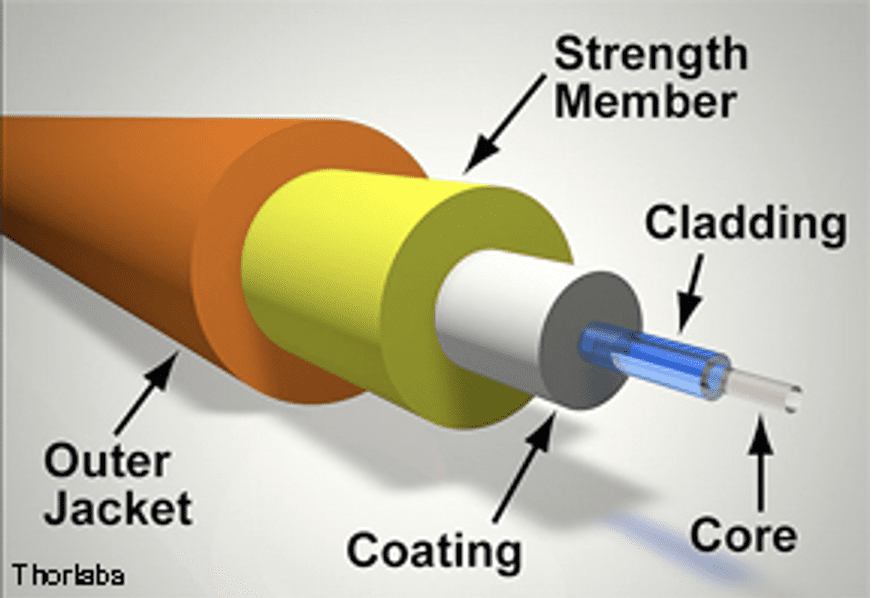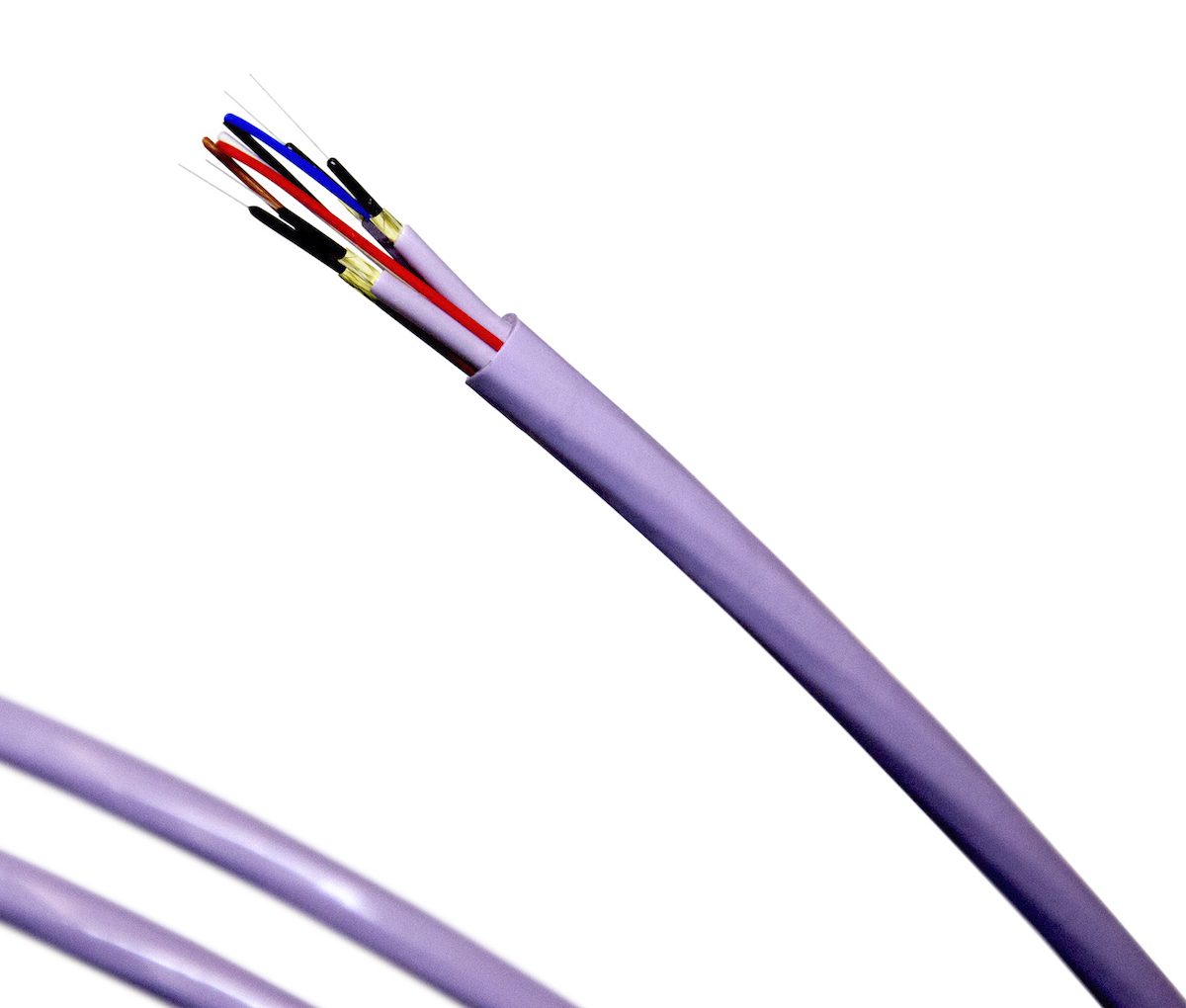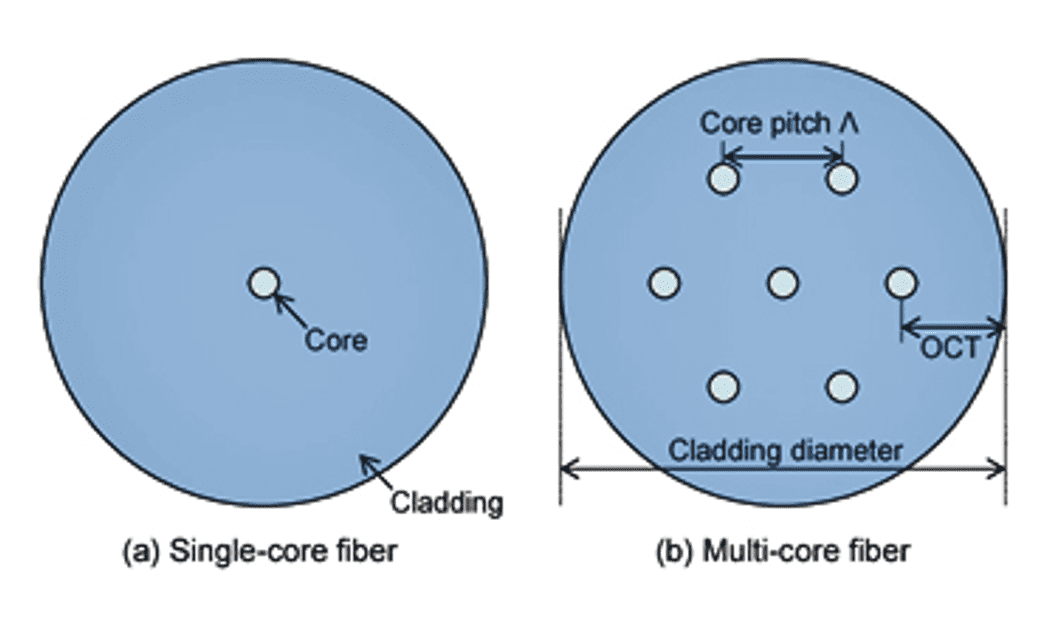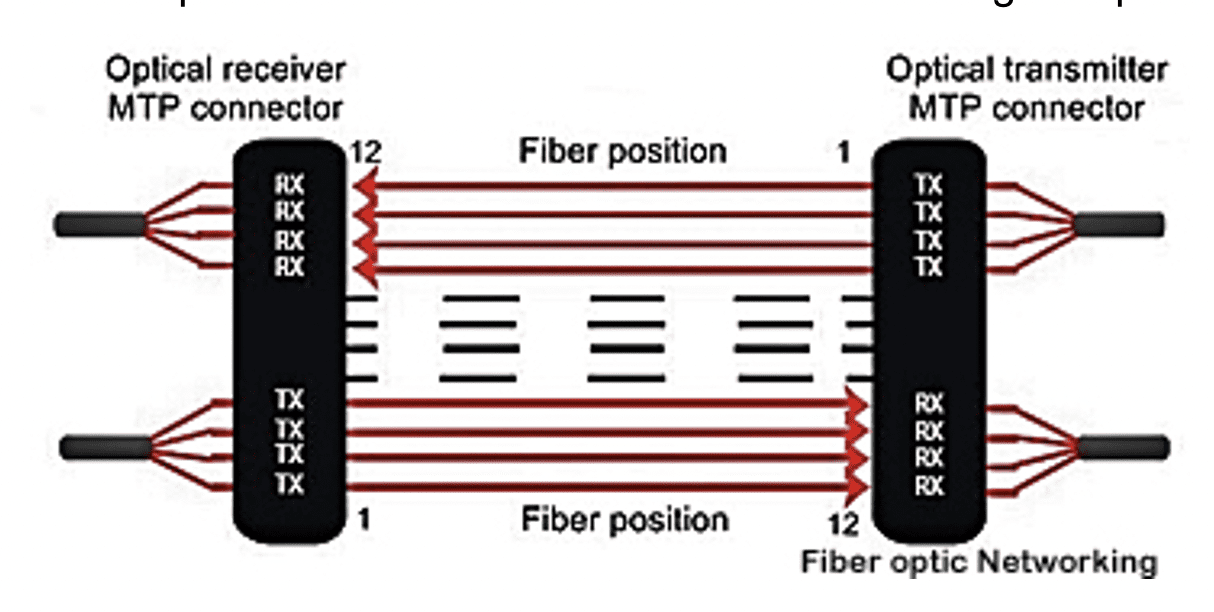Fiber Optic Cable: The Faster, Farther Future of High-Speed Data Links
New optical cables, advanced modulation technology, and improved high-density multi-fiber connectors mean that we may be closer than ever to the Shannon Limit.

Copper PCB traces and cables have ruled the world of high-speed data transmission by continuing to find ways to reduce signal attenuation, distortion, and sensitivity to external interference. Long predicted to be replaced by optical fiber, advanced signal conditioning, multi-level modulation, and error correction techniques have enabled engineers to design twinaxial copper cables running at 112 Gb/s, far exceeding the expectations of just a few years ago.
Every technology has its limits and high-speed copper channels may be approaching those dictated by the laws of physics. As demand for increasing bandwidth grows, attenuation reduces the effective length of a channel, also known as reach. In addition to extremely low attenuation, fiber optic links offer much higher bandwidth capacity, making fiber an attractive alternative.

Switching from copper cabling to fiber optics enables a dramatic leap in system reach. (Corning)
Long distance telecom lines have utilized the reach advantages of fiber optic cables for many years. The cost and power consumption of the required electro-optic conversion process has been a major inhibitor to industry-wide adoption of external and especially internal fiber optic interconnects. Advances in silicon photonics and performance characteristics of optical fiber are changing that equation.

The basic construction of fiber optic cable consists of a tiny strand of glass surrounded by a thin cladding material that enables the internal reflection of light. An additional jacket layer and internal buffers may be added to protect the core and cladding. (Image courtesy of Thoralab)
Fiber optic cables are further defined as multimode and single mode. Multimode fiber can transmit multiple modes of light using low-cost LED sources. Single mode cable typically requires the use of a modulated laser, but features greatly increased reach and bandwidth. Low-cost plastic optical fiber is being used in relatively short reach, low data rate applications.
The International Organization for Standardization (ISO) standardized the performance of optical cables via a series of OM 1-5 designations.

Image courtesy of the FS Community forum.
Optical fiber has undergone a continuous process of improvement in terms of bandwidth, ruggedness, reduced attenuation, ease of termination, reduced fiber diameter, and cost. Early optical cable was highly vulnerable to signal reduction as well as breakage due to rough handling or sharp bends. New “bend insensitive” single and multimode cables permit reduced bend radius limits without failure.

Axon’ Cable offers hybrid cable and multicore solutions insulated with materials that resist highly demanding environments, including industrial, military, and space.
The glass used to form the optical conductor continues to be optimized, resulting in reduced scattering loss, chromatic dispersion, polarization mode dispersion, and microbend attenuation. The current generation of optical cable features attenuation of only 0.15 dB/km at 1550 m.
The proliferation of campus and metro data centers is an emerging trend. Extremely high-capacity optical communication links up to 100 km in length have become essential for the network to function as one large system. Increasing the capacity of cost-effective optical links has become a requirement to support exponential growth of network traffic.
One solution is the use of multicore fiber. Multicore fibers allow for simultaneous transmission of different signals down separate cores within the same clad diameter providing for increased data transmission density on a single fiber.
Advanced, extremely high optical fiber density cables are also entering the market to support increasing traffic. Furukawa recently installed a 6,912-fiber cable inside a 1.25” diameter conduit between two North American data center campuses. The outside diameter of the optical cable is only 35mm.
Hollow-core optical fiber is another variation that is gaining interest. Rather than moving through glass or plastic, light is transmitted in a central core of air. Improvements in production manufacturing have enabled reduced loss and latency characteristics, making hollow-core fiber attractive in applications that require delivery of light or data in very short pulses or with minimal latency.

AirBorn’s RAOC active optical cable is ruggedized for harsh military and commercial aerospace environments.
Active optical cables (AOCs) have become extremely popular for their ability to extend the reach of traditional copper cable assemblies. Utilizing standard copper interfaces, signals are converted to optical pulses within the connector strain relief and coupled to fiber. The reverse process occurs at the receiver end. From the installer perspective, cable reach is increased and cable bulk is reduced.
Ruggedized optical cables feature internal strength members and a tough outer jacket that can survive in harsh military, avionic, and industrial applications.
The packaging options of optical fibers continues to expand, including flat ribbon configurations that simplify wiring and reduce resistance to cooling airflow. High density, multifiber MPO and MXC connectors can terminate up to 72 optical fibers.

Optical fiber is available in standard and customized flat planar assemblies. Multiple fibers are bonded to a flexible substrate to form shuffles or an optical backplane. (Image courtesy of Bel Cinch)
Engineers can satisfy increasing network capacity demand by either laying more fiber (costly) or finding ways to make the existing fiber infrastructure more efficient.
Parallel optics offers an alternative to traditional single or pairs of optical fiber.

Image courtesy of Fiber Optical Networking.
Transmitters on one end communicate with receivers on the other end, spreading a single stream of data over multiple optical fibers. With this configuration, a parallel optics link can use four 2.5 Gb/s transmitters to send one 10 Gb/s signal.
Rather than utilize a single color of light, multiple data streams can be sent simultaneously over the same fiber using slightly different colors of light.

Image courtesy of Fiber Optic Solutions.
A multiplexer at the transmit side encodes multiple data streams with different frequencies of light which is embedded into one beam and coupled into a single fiber. The opposite process occurs at the receiving end of the channel. Bi-directional optical signals can be transmitted over one fiber. With dense wavelength division multiplexing, up to 80 data channels can be multiplexed into a single optical fiber.
Advanced modulation techniques have enabled designers to make further improvements in optical transmission links. Quadrature Amplitude Modulation (QAM) combines multiple levels of amplitude and phase variations to increase the capacity of an optical data communication link.
Using a combination of amplitude, phase, and polarization, coherent technology is the most robust and efficient modulation to optimize optical data transmission. Coherent transmission combines four levels of amplitude modulation and phase modulation with vertical and horizontal polarization of light to maximize the data capacity of a single fiber. Next-generation 800 Gb links using this technology have already entered the market.
Each of these technologies has pushed the capacity of fiber to ever greater levels. The industry is now facing the prospect of nearing the theoretical limit of a single communication channel. The Shannon Limit, which dates to 1948, is the calculated maximum rate of error-free data that can be transferred over a communication channel of any type that is subject to transmission errors due to noise. Until a few years ago, it was not of particular concern, given the capacity of existing optical channels. However, new generations of hardware and modulation techniques have put the Shannon Limit within sight.
Demand for high-speed data links is being driven by multiple trends, including the growth of hyperscale data centers, moving computing resources to the edge, continued adoption of 5G, and expansion of fiber to the home. Advances in the performance of optical fiber and advanced modulation technology coupled with improved high-density multi-fiber connectors are providing the roadmap to the future of high-speed computing and communications.
Like this article? Check out our other Cable Assemblies, Fiber Optics, and Market Update articles, our Datacom/Telecom and Wire/Cable Assemblies Market Pages, and our 2021 Article Archives.
Subscribe to our weekly e-newsletters, follow us on LinkedIn, Twitter, and Facebook, and check out our eBook archives for more applicable, expert-informed connectivity content.
- Optics Outpace Copper at OFC 2024 - April 16, 2024
- Digital Lighting Enhances your Theatrical Experience - March 5, 2024
- DesignCon 2024 in Review - February 13, 2024





